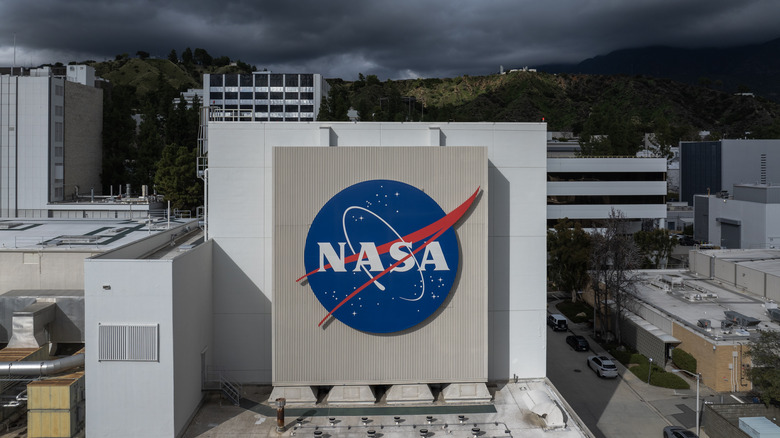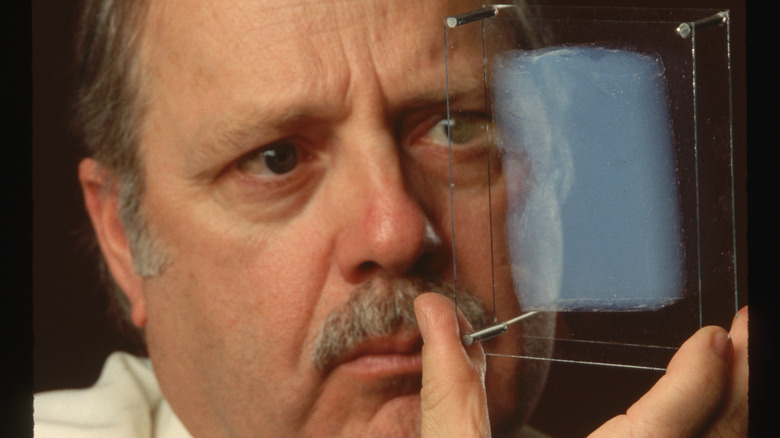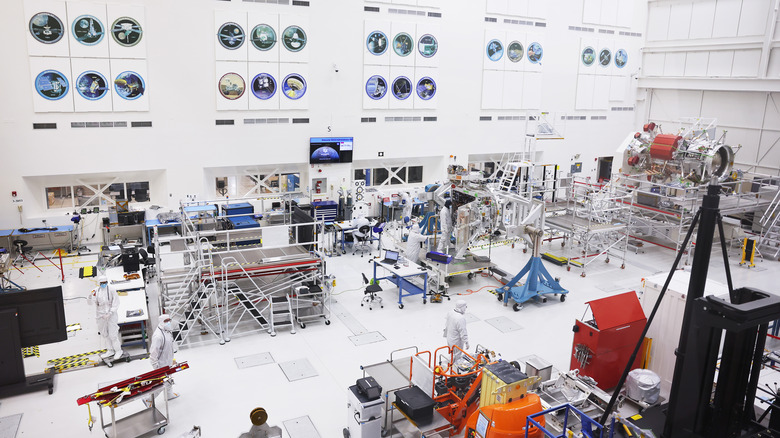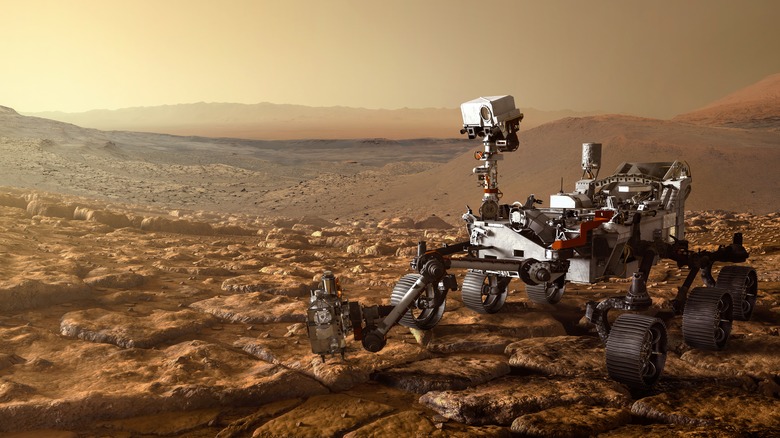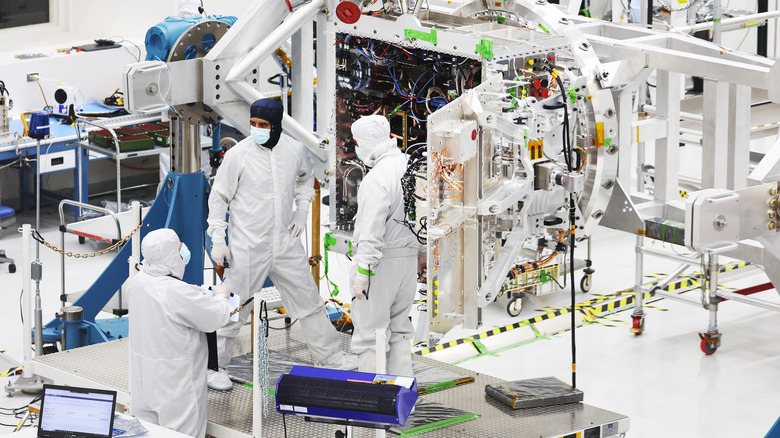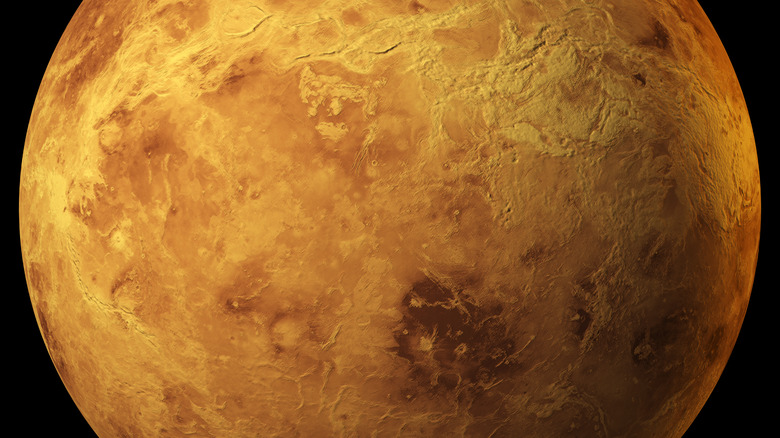5 Interesting Facts About The NASA Jet Propulsion Laboratory (JPL)
NASA, one of the world's most familiar acronyms, is a global powerhouse in space exploration. Over 18,000 people work for the organization to help develop humanity's understanding of the wider universe. Though theoretical work is vital to such endeavors, there's no substitute for getting out into that universe and experiencing it directly. Or, at least, getting drones, sensors, and other instruments into it.
NASA's Jet Propulsion Laboratory has been integral in humanity's efforts to do just that. JPL, interestingly, is not a direct part or department of NASA itself but is a Caltech enterprise that gets federal funding from NASA. It arose from the work of Caltech students, who had been clandestinely developing rocket technology almost a century ago. Their work was deemed so advanced and promising that JPL was taken under the wing of the military before being linked to NASA after its founding in 1958 (with the signing of the National Aeronautics and Space Act of that year).
What has JPL done since? Aside from being central to some of the highest-profile launches and space-related milestones in human history, it has also achieved some surprising world records and hosted some unexpected events. Here are just a few of the many fascinating facts about JPL, the organization responsible for the remarkable longevity of the Voyager spacecraft, among many other things.
It achieved a tiny, tiny world record (and then lost it)
In 1928, Dr. Alexander Fleming discovered the ever-invaluable antibiotic penicillin. He proved that sometimes, the tiniest of discoveries can have the biggest impact. JPL has demonstrated this very same thing in its time too.
In May 2002, Guinness World Records named a JPL creation the world's least dense solid. That material was aerogel, a silicon dioxide blend almost 99% compromised of simple air. Created using an elaborate blending and drying process, this substance, described by JPL as "a glassy sponge of silicon," is a refinement of scientist Samuel Kistler's original invention of aerogel in 1932. With its resistance to the rigors of space flight, the material has had fascinating applications, including being used to "catch" comet particles (which enmesh themselves in the material for later analysis).
JPL's Dr. Steven Jones developed an aerogel that weighed just 3 milligrams per cubic centimeter in weight, which claimed the new record. Jones stated at the time that "it's probably not possible to make aerogel any lighter than this," but scientists enjoy achieving the seemingly unachievable. Per Guinness World Records, the least dense solid on the planet is now Zhejiang University's aerogel, which (as of February 2013) is just 0.16 milligrams per cubic centimeter.
It hosts a unique invention competition for students and employees
Sometimes, advanced science can seem, if not boring, outright impenetrable for non-experts. Certain topics, such as dinosaurs and space, can interest and inspire younger generations. There may not be any dinosaurs at JPL, but the organization is doing its part to foster an interest in science among students.
JPL's Annual Invention Challenge is an important component of this. The 2023 event marked 24 years of the contest, in which teams compete to create a device to achieve a certain goal. The 2023 challenge, the documentation explains, is called the Paper into a Basket Contest, with the intent being to "create a device that can place a sheet of paper into a wastebasket using multiple consecutive activities."
With JPL staff eligible to compete along with middle and high school students (child and adult applications both available), a wide range of approaches to resolving such a seemingly simple task are always sure to result.
From 2004's Bowling Ball Drop Contest ("create a device that moves an officially supplied 10-pound [4.5 kg] bowling ball from a 1.5-meter tall platform into a spring-loaded pan") to 2012's tissue paper challenge ("create a device that propels a provided roll of tissue paper such that the tissue unravels in mid-air and creates a long unbroken stream"), the event certainly provides a new and fun task every time.
It also achieved a very heavy world record
As we've seen, the changeable nature of aerogel development also meant that the world record holder is changeable too. Still, JPL holds another interesting record. This one centers on another of the company's innovations, a rather larger one that has done impressive work in space.
The JPL-built Perseverance rover, which arrived on Mars' rocky surface in February 2021 after a journey from Earth of around seven months, was thoroughly equipped for the trek there and its mission. Its advanced features included an UV and x-ray spectrometer, sophisticated sensors to collect data on wind strength and changing weather conditions, and a radar system dubbed "RIMFAX", which gathers readings from beneath the ground where the probe can't physically go. Its array of equipment contributes to its record-breaking weight.
Guinness World Records notes that Perseverance is the largest planetary rover, weighing 2,262.8 lb. That weight is equal to around 282 of the smallest rovers in the world: The Sorato rover, the smallest, cutest, just over 8 lb rover that was designed for Google's Lunar X prize competition. Soon, NASA and JPL could have a swimming robot snake ready to explore such hostile environments even further.
The sheer size of the JPL complex is something to behold
You might think a science lab might not be the most spellbinding of sights. Perhaps you're picturing a small, nondescript building, all dull gray corridors and textbook shelves. While JPL will certainly have more than its share of books, it's a huge and expansive complex.
The Pasadena foothills, the Arroyo Seco region where those first Caltech students took their passion for rocket research and ultimately made one of NASA's most influential allies out of it, is now dominated by JPL. The complex covers about 177 acres of land. This may not seem all that staggeringly big (New York City's Central Park covers around 840 acres), but it's important to get a wider picture of what that really means.
In May 2023, JPL's Laurie Leshin neatly emphasized the size and scope of the complex by quipping to The Washington Post that "JPL is bigger than Disneyland ... and a lot cooler." This was no joke, either: The world's wider Disneyland and Disney World complexes may be far larger (as are NASA properties like the Kennedy Space Center at around 6,000 acres of land), but Disneyland Park in California specifically is "just" 85 acres in size.
Home to approximately 6,300 employees and 150 buildings, JPL is a huge bastion of scientific activity.
A JPL mission planned a crash into a planet for the very first time
There are a lot of difficult things about trips into space. For one thing, with current technology, they take a very, very long time. Venus, for instance, may be a next-door neighbor of the Earth, but no spacecraft has ever made the journey there faster than August 1962's Mariner 2 mission, which took 109 days to arrive. For another, of course, humans can't merrily leave their spaceship and walk around on the other planets, which have incredibly hostile atmospheres.
This means that probes, drones, and other human-free craft are chosen to venture out in our stead. One such craft was Magellan, which was built by Martin Marietta and set out into space in May 1989. Its mission was a world-first: To orbit Venus (also explored by a range of other intriguing missions) and slowly map the planet in detail. In doing so, the orbiter provided the world's scientists with unprecedented detail about Venus and its makeup. The JPL-managed mission used a sophisticated maneuver known as aerobraking for the first time, allowing for easier control of the orbiter using Venus' own atmosphere as it gathered its information.
This was supposed to be a one-way mission, however. After around four years of meticulously gathering data, JPL directed Magellan to the surface of Venus in October 1994. This end, which provided even more unique insight into the planet, was also the first of its kind.
